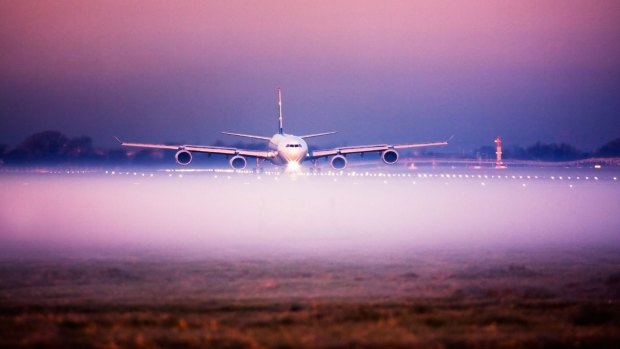This was published 5 years ago
How much visibility does a pilot need to land safely in fog?

Fog at London's Heathrow Airport.Credit: Alamy
It all depends on the airport's Instrument Landing System (ILS), the ground-based technology that guides an aircraft safely onto the runway when a visual approach is not possible, assuming that the aircraft is equipped with an instrument approach capability and the pilot is suitably qualified.
The least restrictive ILS is CAT I, for which the minimum runway visual range (RVR) is 800 metres.
For CAT II the figure is 300 metres while CAT III is divided into three sub-categories. At an airport with CAT IIIa, the minimum RVR is 180 metres, for IIIb the figure is 46 metres.
Considering that a typical landing speed for a commercial airliner is around 265kph, the aircraft will cover that 46 metres in about two-thirds of one second.
Most large airports have at least a CAT IIIb ILS, including New Delhi which is frequently affected by poor air quality, and extremely low visibility.
At an airport with CAT IIIc ILS aircraft can land blind, that is with zero RVR, but this system is not yet in operation anywhere. Although they can land safely, aircraft cannot taxi with zero visibility.
Sign up for the Traveller newsletter
The latest travel news, tips and inspiration delivered to your inbox. Sign up now.